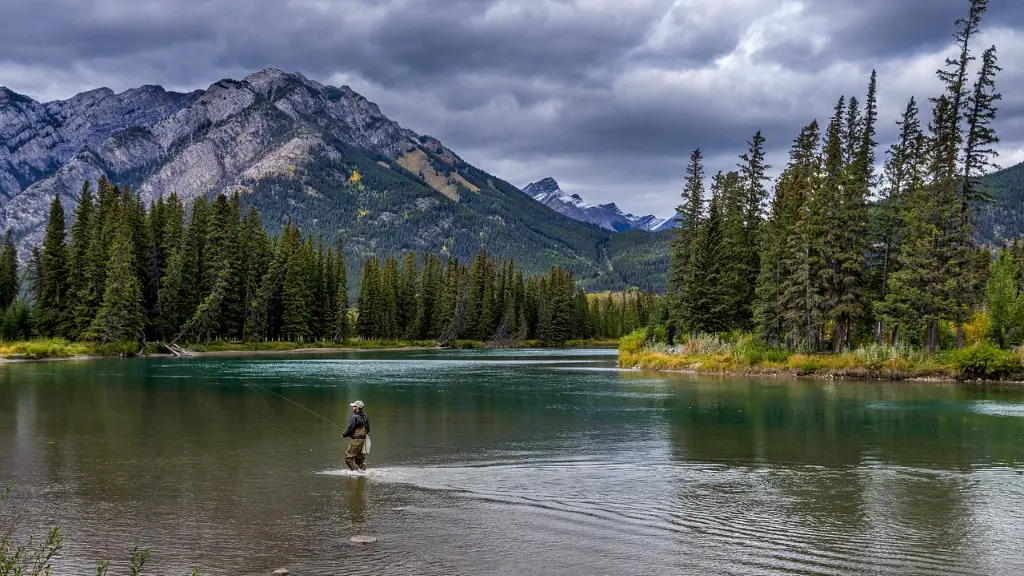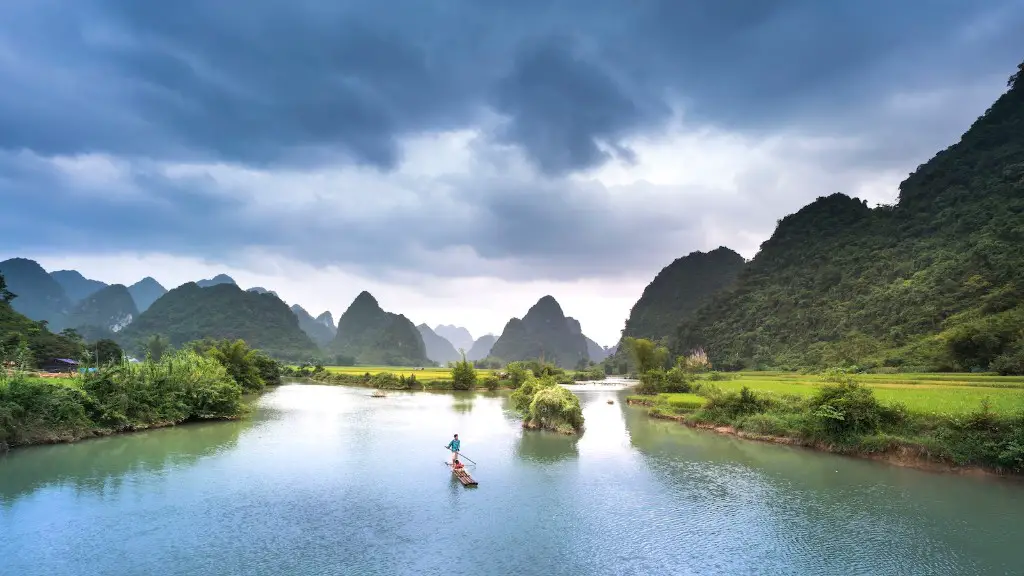From its origin in the glaciers of the Qinghai-Tibet Plateau in Western China, the Yangtze River slices through central and eastern China, emerging into the East China Sea.
The Yangtze River is the longest river in Asia and the third longest in the world. Measuring 6,300 km in length, it has been a major source of food, freshwater and transport since ancient times. The river transverses through 10 provinces, municipalities, and autonomous regions along its route and has created an important artery of communication within China since ancient times.
Significant experts, such as researchers at the Yangtze River Institute, note that the river is not just an important water resource in the region and a major transportation route, but also serves as a vital ecological habitat as well. Its vast biodiversity provides numerous ecological services, and its sheer length means that it also plays host to various climates and habitats, making it home to thousands of species of fish and animals.
The geographical location of the Yangtze River also means that it is subject to a variety of different weather systems, from monsoons to typhoons. This variability can have an impact on its tributaries, sources, flooding and water levels. Additionally, the river’s contribution to the local activities has led to an increase in population density along its shores, with more and more people vying for its resources.
The Yangtze River is situated in the Asian continent and has been significant in providing water, freshwater and transport to locals and ecosystems over generations. Together with its tributaries, the river contains more than one third of China’s freshwater supply, provides drinking water to around 500 million people and supports a large number of businesses and industries in the region.
Living along the banks of the Yangtze River are the Bai, Tu, Miaos and Buyi ethnic minorities. These communities reside in villages situated on the river’s banks and take part in large scale fishing, farming and transport activities in the region. As a result, the river has been a place of economic and social importance to them over centuries.
The Yangtze River is known as China’s ‘mother river’ and has been an integral part of the country’s economic, cultural and social development throughout the centuries.
Erosion, Siltation, and Flooding
Erosion caused by over-human-generated activities along the Yangtze River have caused severe siltation, leading to a reduction in water carrying capacity along the river. This has created a higher risk of flooding, as well as problems with navigation and power generation in the region.
Experts warn that a large scale flooding event could occur along the Yangtze River if additional protection measures aren’t taken and widespread prevention infrastructure isn’t implemented. Significant steps are being taken, with the construction of dams and flood walls to help reduce the potential damage.
Environmentalists, such as those at the Yangtze River Institute, have cautioned that these dams can have a serious ecological impact, disrupting the river’s natural habitat. They have recommended that China creates ‘ecological corridors’ – which are special areas along the river where certain activities are restricted to prevent further degradation.
The Chinese authorities have paid a growing attention to the management of the Yangtze River’s resources, setting up specific policies and issuing regional regulations in order to keep the river and its natural resources from being overused.
In recent years, the government has also introduced several projects such as the “Sponge City Project” and “One River, Nine Lakes Project” in order to manage stormwater runoff and reduce the risk of flooding along the Yangtze River. These projects have contributed to restoring local ecology while also helping to protect communities from floods and other natural disasters.
Environmental Challenges
The Yangtze River is facing many environmental problems due to its industrialization and high population density. Pollution, sediment accumulation, silt particles, and climate change are all factors contributing to its environmental degradation. The main sources of pollution are domestic waste, untreated industrial discharge, and agricultural runoff.
In addition to these sources, dams built along the river have impacted its hydrology and ecology. Hydrologic alterations have caused changes in the river’s sediment load, water quality, and downstream habitat. The decreased water release from dams has caused an increase in the sediments, which hinders water supply, navigation, and Flood control.
The formation of wetland ecosystems has also been affected, reducing the habitats available for many species. Pollutants also reduce water quality and contribute to the spread of disease borne by water-borne pathogens.
As a result of these problems, experts at the Yangtze River Institute have called for improved management of the river’s resources and have advocated for the development of effective policies to address the various environmental threats. International organizations such as the Nature Conservancy, WWF, and WWF-China have lent their support to the development of sustainable river practices and the implementation of policies to protect the Yangtze River.
Economic and Societal Effects
The Yangtze River is a major economic and cultural center in East Asia and has significant economic and social impacts on the communities living along its route. From providing freshwater, irrigation water and transport to enabling navigation, navigation and communication, the river supports a wide range of activities that directly or indirectly contribute to the overall economic and social development of the region.
The Yangtze River Delta is also considered to be China’s economic powerhouse, accounting for 25% of China’s GDP and representing a $900 billion market annually. A significant portion of the country’s urban population and businesses are located in the region, making it a major entry point for trade and foreign investments.
For communities living along the Yangtze River, it is not only an important economic resource but also a cultural one, reflected in songs, poems, and art. The River has been a source of inspiration for generations and has been a part of Chinese life for centuries.
The economic and social benefits of a healthy Yangtze River cannot be overstated. With the right management practices and effective policies, the Yangtze River can continue to provide vital resources and inspiration to its water source.
Impacts of Climate Change
Climate change is increasing the frequency and intensity of seasonal floods, droughts, and other natural disasters along the Yangtze River. In addition, rising sea levels are putting the cities and population living along its coastline at an increased risk.
Rising temperatures and changing precipitation patterns are wreaking havoc on the river’s ecosystems, leading to changes in its flora and fauna, water quality and salinity levels. Additionally, climate change is also contributing to the increased frequency of extreme weather events, such as typhoons and hurricanes.
Climate experts have pointed out that these changes will have a serious effect on the people and communities dependent on the Yangtze River for their livelihoods, leading to water shortages, crop failure, and economic disruption.
In response to this, China has been investing heavily in water conservation, investing in large-scale ecosystem restoration projects and new water harvesting technologies, in order to ensure the sustainability of the Yangtze.
Major Projects
The Chinese Government has launched a number of ambitious projects along the Yangtze River in recent years, in order to help protect the river and its resources. One of the most important projects is the Three Gorges Dam, which is the largest hydroelectric dam in the world and spans 1.3 km across the river.
The main purpose of the project is to generate electricity while providing flood control, navigation and irrigation water. Another of these projects is the Three Gorges Water Resources Project, which is aimed at protecting water resources, establishing a sustainable agricultural system, and promoting eco-tourism.
The Chinese government has also initiated the Yangtze River Economic Belt project, which involves more than 40 cities along the Yangtze River and is intended to create an economic corridor for further economic development in the region.
In addition to these projects, the Chinese government has also launched the Yangtze River Protection Law, which is intended to ensure the sustainable development of the river and its resources. This law prohibits any activities that would cause harm to the environment and stipulates that regional governments must implement a River-First policy to ensure proper management of the Yangtze.
Conclusion
The Yangtze River is China’s longest river and has been an important source of freshwater, transport, food, and economic and cultural activities since ancient times. Located in the Asian continent, it has faced many environmental challenges due to the intensive human activities in its area. As such, it is important to establish and implement effective policies to protect the Yangtze and its resources from further degradation.





